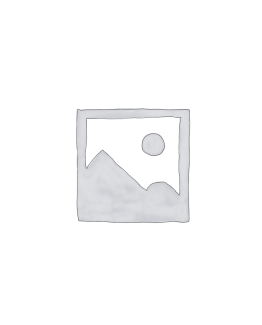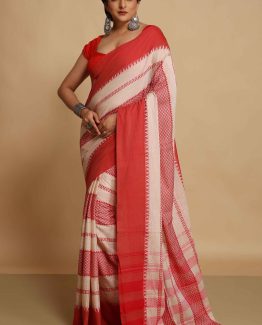Dhaniakhali
Dhaniakhali Saree is named after the place Dhaniakhali in Hooghly District, West Bengal. It is located at about 50 kms away from Kolkata. In earlier days the ground of the saree used to be in ‘Kora’ or natural grey with either red or black colour plain border. By taking the concept of decorative border design of dhoti the use of 6 levers’ kat-kal’ or barrel dobby came in practice for saree weaving during early 1940 . Dyed yarn was first introduced in 1942. Now a days, lattice dobby is used for weaving bigger designs. Dhaniakhali sarees are produced in Haripal, Rajbalhat Rasidpur, Dwarhata, Ramnagar, Gurap and Antpur area of Hooghly Disitrict in West Bengal.
Normally, cotton yarns of 80s to 100scount are used both in warp and weft with extra warp of 2/100s or 2/80s cotton yarn. For 100s cotton warp, reed of 80s is commonly used to keep the traditional texture of the sarees. ‘Sar’ reed is very common in Dhaniakhali and it is manufactured locally from Sar plant (A plant of Bamboo variety). The advantage of using sar reed lies in flexibility and its ethnic look of the fabric.


